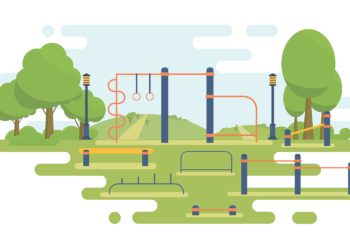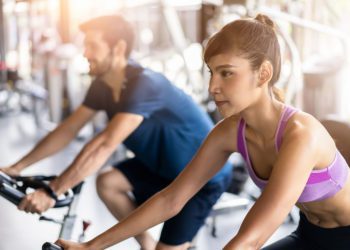The acoustic issues found in typical athletic facilities stem from the nature of their construction and the specified materials or surfaces. Many facilities are built as large, open spaces dominated by hard walls and ceilings that reflect sound.
Common sources of sound that should be isolated or dampened throughout an athletic facility include:
- Weight drops
- Cardio machines
- Footsteps or pounding
- Exercise class music
- Structural sounds – HVAC systems, motors, etc.
Many of these sounds can travel quickly and create unwanted noise in other spaces within a building. To isolate the sounds within an enclosed space and dampen their impact, absorptive materials must be used to shorten or eliminate reverberation while irregular surfaces should be arranged to reflect sound in different directions.
Athletic surfaces can play a key role in determining the athletic performance, safety, acoustics, aesthetics and usability of a space. When selecting a sport or fitness surface, there are many factors to consider, including environmental sustainability, material strength, durability, appearance, and impact on athletic biometrics and safety. Different surfacing options include:
- Hardwood
- Synthetic turf
- Resilient
- Carpet
- Composition rubber
New technologies in flooring allow for products, such as vinyl fused to a composition rubber backing, to provide the look of wood combined with the area elasticity required for the activity. For the majority of sports applications, vinyl, rubber or synthetic turf wear layers with a composition rubber backing provide an optimal flooring choice for improving acoustics while keeping athletes safe and performing at top levels. Some applications of rubber in athletic spaces include training centers, weight rooms, indoor playing fields, indoor tracks, indoor courts and exercise rooms.
The variety of flooring materials may seem limitless, but narrowing down your options based on the acoustic needs of the space will help simplify the selection process. For good acoustic performance, there are three basic choices to consider:
- Resilient flooring composed of material such as cork or rubber can inherently mitigate the vibrations that transmit sound.
- Hard or smooth flooring surface with a performance backing or underlayment composed of a sound-mitigating material.
- An engineered system combining a variety of surfaces with built-in performance underlayment.
In an athletic facility, a detailed analysis and balancing of sound absorption, reflection and transmission may be required to protect adjacent spaces from experiencing unwanted noise. Flooring specifiers should partner with product technical experts who offer a range of expertise working with different types of facilities and products. Seek out providers that offer research and testing on their products, as well as customizable solutions to meet the unique needs of the space.
By Ecore Athletic. For more information, visit ecoreathletic.com.










